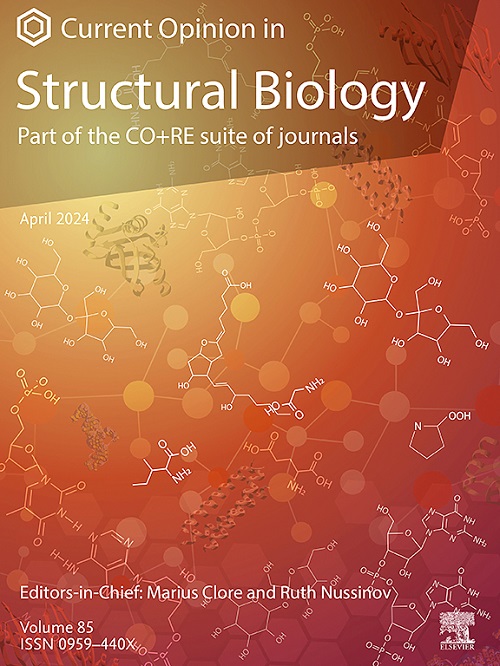Virtual reality in drug design: Benefits, applications and industrial perspectives
IF 6.1
2区 生物学
Q1 BIOCHEMISTRY & MOLECULAR BIOLOGY
引用次数: 0
Abstract
Virtual reality (VR) is a tool which has transformative potential in domains which involve the visualization of complex 3D data such as structure-based drug design (SBDD), where it offers new ways to visualize and manipulate complex molecular structures in three dimensions, and enable intuitive exploration of protein-ligand complexes. In this article, we outline three levels of interaction which are available in immersive VR environments for drug discovery, and provide illustrative case studies with applications in COVID-19 research and protein-ligand docking. We discuss VR's role in drug discovery based on conversations with experts from the pharmaceutical industry. While industry experts are mostly optimistic about the potential of VR, they point to the challenges related to integration with existing workflows and the need for improved hardware ergonomics, as well as ensuring a synergistic relationship between VR and an expanding suite of artificial intelligence (AI) tools.

虚拟现实在药物设计中的应用和工业前景
虚拟现实(VR)是一种具有变革潜力的工具,在涉及复杂3D数据可视化的领域,如基于结构的药物设计(SBDD),它提供了在三维上可视化和操纵复杂分子结构的新方法,并能够直观地探索蛋白质配体复合物。本文概述了沉浸式VR环境中可用于药物发现的三个层次的交互,并提供了在COVID-19研究和蛋白质配体对接中应用的说明性案例研究。我们通过与制药行业专家的对话来讨论VR在药物发现中的作用。虽然行业专家大多对VR的潜力持乐观态度,但他们指出了与现有工作流程集成、改进硬件人体工程学需求以及确保VR与不断扩展的人工智能(AI)工具套件之间的协同关系相关的挑战。
本文章由计算机程序翻译,如有差异,请以英文原文为准。
求助全文
约1分钟内获得全文
求助全文
来源期刊

Current opinion in structural biology
生物-生化与分子生物学
CiteScore
12.20
自引率
2.90%
发文量
179
审稿时长
6-12 weeks
期刊介绍:
Current Opinion in Structural Biology (COSB) aims to stimulate scientifically grounded, interdisciplinary, multi-scale debate and exchange of ideas. It contains polished, concise and timely reviews and opinions, with particular emphasis on those articles published in the past two years. In addition to describing recent trends, the authors are encouraged to give their subjective opinion of the topics discussed.
In COSB, we help the reader by providing in a systematic manner:
1. The views of experts on current advances in their field in a clear and readable form.
2. Evaluations of the most interesting papers, annotated by experts, from the great wealth of original publications.
[...]
The subject of Structural Biology is divided into twelve themed sections, each of which is reviewed once a year. Each issue contains two sections, and the amount of space devoted to each section is related to its importance.
-Folding and Binding-
Nucleic acids and their protein complexes-
Macromolecular Machines-
Theory and Simulation-
Sequences and Topology-
New constructs and expression of proteins-
Membranes-
Engineering and Design-
Carbohydrate-protein interactions and glycosylation-
Biophysical and molecular biological methods-
Multi-protein assemblies in signalling-
Catalysis and Regulation
 求助内容:
求助内容: 应助结果提醒方式:
应助结果提醒方式:


